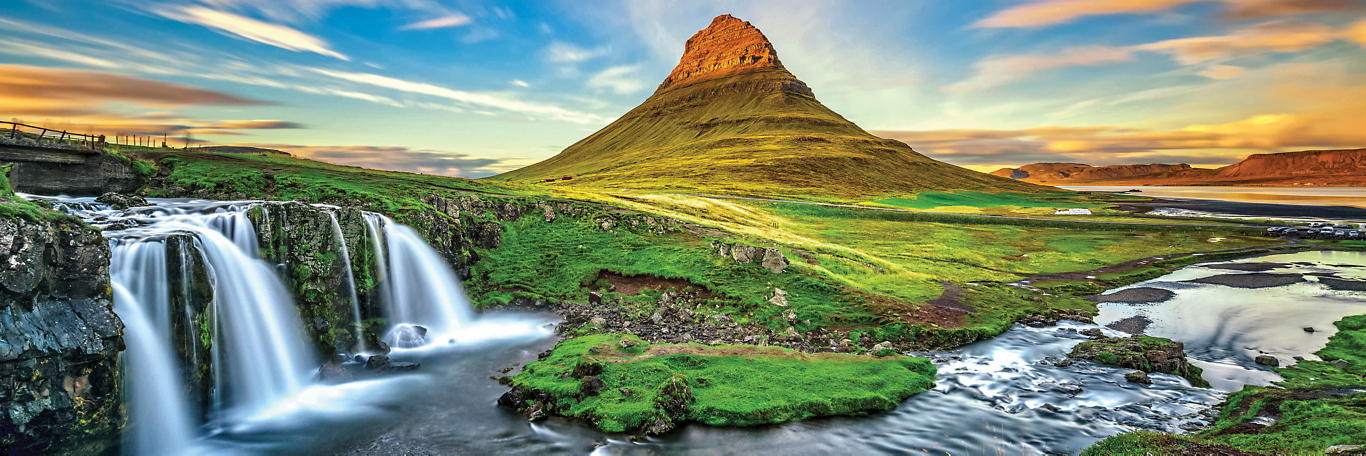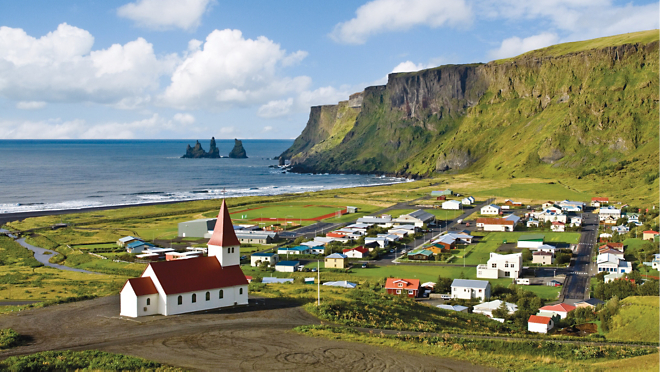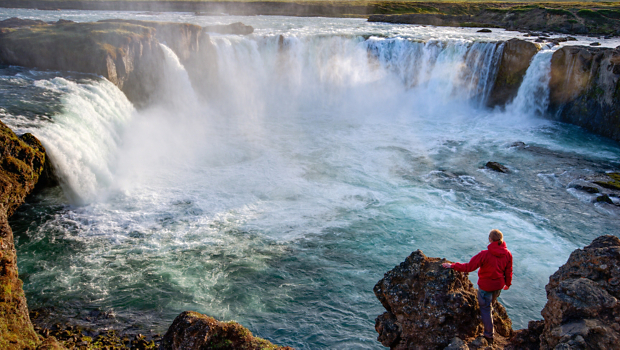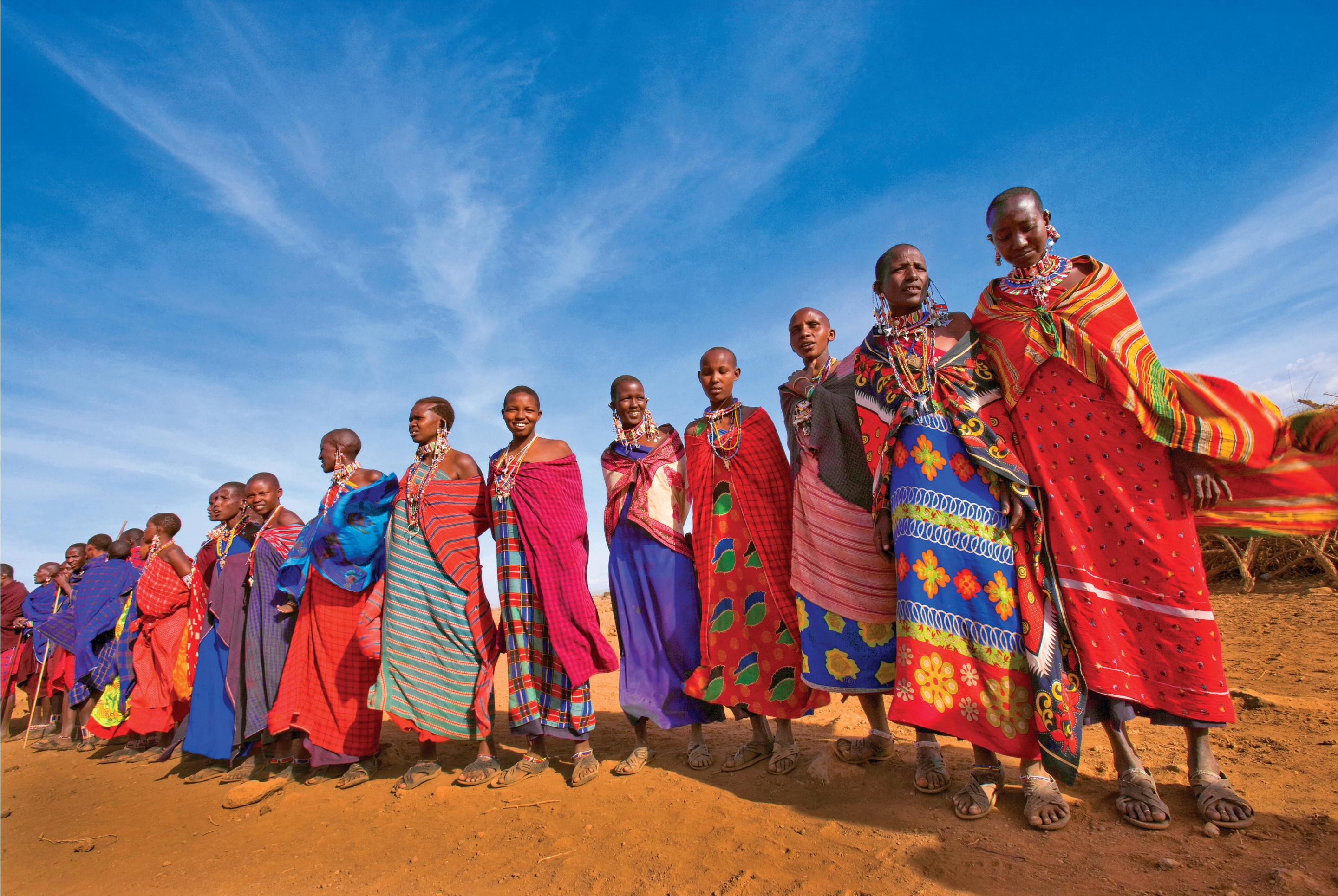You’re receiving this message because your web browser
is no longer supported
We recommend upgrading your browser—simply click the button below and follow the instructions that will appear. Updating will allow you to accept Terms and Conditions, make online payments, read our itineraries, and view Dates and Prices.
To get the best experience on our website, please consider using:
- Chrome
- Microsoft Edge
- Firefox
- Safari (for Mac or iPad Devices)

iceland
Overseas Adventure Travel, the leader in personalized small group adventures, has been changing lives through travel since 1978. Our Iceland adventure will take your small group into the heart of a destination to venture where the big tour groups can’t. No matter which adventure you choose, O.A.T. always offers our travelers:
- Personalized travel experiences, with options to arrive early, add pre- or post-trip extensions, stopover in popular cities, and more.
- Small group of no more than 16 travelers, allowing us to take you off the beaten path and immerse you in local culture.
- Adventures tailored to the solo traveler, with FREE Single Supplements
- Expert Trip Experience Leaders, residents of the region you visit who will share their insights and bring your destination to life.
When you set out on an O.A.T. Iceland adventure, there are endless travel experiences waiting for you. Discover the Land of Fire and Ice and witness magical landscapes of geysirs, glaciers, and thundering waterfalls. Experience the warm hospitality of Iceland's hardy residents during an overnight stay at an Icelandic horse farm. Journey near the Arctic Circle and sit down to dinner with a local family in Akureyri. Witness the rugged landscapes of Iceland's southern coast on an off-roading adventure. You can experience all of this and more when you journey to Iceland with O.A.T.
Your FREE Personalized Iceland Travel Planning Guide
Your FREE Personalized Iceland Travel Planning Guide is on its way
Want to continue learning about Iceland? Return to our Iceland destination page.
Go Back To IcelandPlease note: To complete your registration, check your email—we sent you a link to create a password for your account. This link will expire in 24 hours.
Compare Our Adventures
Click 'Select to Compare' to see a side-by-side comparison of up to adventures below—including
activity level, pricing, traveler excellence rating, trip highlights, and more

Spend 13 days in Iceland on
Untamed Iceland
O.A.T. Adventure by Land
Spend 6 days in Iceland on our
Pre-trip Extension
Reykjavik & Iceland's Natural Wonders
Reykjavik & Iceland's Natural Wonders

Spend 6 days in Iceland on our
Pre-trip Extension
Reykjavik & Iceland's Natural Wonders
Reykjavik & Iceland's Natural Wonders

Compare Adventures
Add Adventure
including international airfare
per day
*You must reserve the main trip to participate on this extension.
**This information is not currently available for this trip. Please check back soon.
You may compare up to Adventures at a time.
Would you like to compare your current selected trips?
Yes, View Adventure ComparisonIceland: Month-By-Month
There are pros and cons to visiting a destination during any time of the year. Find out what you can expect during your ideal travel time, from weather and climate, to holidays, festivals, and more.
Iceland in November-March
Despite the country's name and its position just south of the Arctic Circle, Iceland is not an icy wasteland during the winter months. In fact, the average temperature hovers around 31 degrees Fahrenheit—comparable to winter in New York City. However, dark skies and driving winds can make it feel colder, and passing blizzards can make the roads treacherous. It's essential to be prepared during a wintertime trip to Iceland, with thermal gear, waterproof outwear, and plenty of layers.
With daylight confined to a few hours during the middle of the day, winter visitors have less time to admire Iceland's renowned scenery—but plenty of time to search the night skies for the northern lights.
Holidays & Events
- Early November: Iceland Airwaves, a five-day annual music festival, showcases popular music and rising stars in venues around Reykjavik.
- December 25: Christmas
- First weekend in February: Winter Lights Festival. Every February, Reykjavik is illuminated with colorful displays of light, meant to symbolize the growing sunlight hours.
Must See
The northern lights draw visitors to Iceland from around the world, and they are easier to spot during the long nights of winter. All it takes is patience and clear skies—the notoriously fickle aurora are liable to appear at any time and fade just as quickly. Aurora forecasts can be found online, and many local hotels will wake sleeping guests during particularly vibrant displays.
Watch this film to discover more about Iceland
Iceland in April-May
As spring arrives in Iceland, experienced travelers come too, hoping to beat the summer crowds. The days lengthen and snow thaws across the country's vast interior. In the south, flowers begin to bloom as migrating birds—like the famous puffin— touch down on coastal cliffs. Occasional snowstorms pass by even in April, but their impact is minimal and short-lived, as warmer temperatures and mild sunshine melt any lingering snowdrifts. Throughout the spring, daylight hours are long enough to allow plenty of exploring in Iceland's stunning landscapes—but not too long to prevent sightings of the northern lights.
Holidays & Events
- April: Blues legends from both sides of the Atlantic come to perform at the annual Reykjavik Blues Festival.
- First Thursday after April 18: Iceland celebrates their own "official" first day of summer with a public holiday.
Must See
Early May kicks off whale-watching season in the northern Iceland community of Dalvík. Enormous humpback whales, minke whales, even orcas and blue whales enter the nearby fjord, situated at the edge of the Arctic Circle, during the busy May feeding season. Many whale-watching excursions witness playful breaching and fluking, when the whales display their unique tails just before diving.
Watch this film to discover more about Iceland
Iceland in June-August
With 20 or more hours of daylight each day during the summer months, Iceland becomes a magical playground for all-day adventuring. Although the northern lights are invisible during this bright season, dramatic landscapes including fjords, glaciers, lava fields, and serrated peaks more than make up for it. Although it rarely gets hot in Iceland, summertime is mild—with the exception of passing storms that bring wind and rain. Water- and wind-proof layers are a good idea, as well as an eye mask for the twilit sleeping hours.
All summer, tour buses deposit crowds at Iceland's most popular attractions, but the vast natural landscapes make room for more adventurous travelers to get off the beaten path and into a world of serene quietude.
Holidays & Events
- June: Every other year, the Reykjavik Arts Festival brings classic and contemporary artwork from all disciplines to Iceland, where it is displayed—or performed—in unconventional venues.
- June 17: Icelandic Independence Day
- Second or third weekend in August: Danish Days. The residents of Stykkisholmur celebrate the town's heritage as a Danish trading post every summer.
- First or second Saturday in August: The Great Fish Day. Every August, the town of Dalvík hosts a public seafood buffet to show off their fishermen's wares.
- Mid-August: Culture Night. With the slogan "Come on in!" residents of Reykjavik invite visitors and each other to experience Icelandic hospitality and enjoy a diverse offering of cultural events.
Must See
Visitors from further south will appreciate the experience of long summer days—with the sun rising at 3 a.m. and setting after midnight for several days in mid-June. With such long days, summer is a good time to enjoy just about anything in Iceland, but glacier hikes, puffin-spotting, and whale-watching are especially enjoyable during this mild time of year.
Watch this film to discover more about Iceland
Iceland in September-October
Fall in Iceland provides a preview of the long winter months to come, with rain, wind, and temperatures occasionally dropping toward 30 degrees Fahrenheit—but overall it remains mild and closer to 50 degrees. The Ring Road, which circumnavigates the country, remains open and allows visitors to see the entire island before winter weather closes in. Autumn foliage splashes the hillsides with color, brightening an already-beautiful landscape. The nights grow longer, with opportunities to spot the northern lights when the weather is clear. And across the country, summer crowds have departed, leaving natural landmarks and cultural attractions more peaceful. Locals often go berry-picking in the countryside, and then turn their wild berries into jams, cakes, juices, and wines.
Holidays & Events
- Late September: Reykjavik International Film Festival (RIFF). Every September for eleven days, RIFF showcases independent dramas and documentary films from around the world.
- Throughout September and early October: Every fall, Iceland's farmers and shepherds venture out into the country to round up their sheep in a traditional called réttir. Family, friends, and visitors are more than welcome to participate, especially during the post-round-up celebration. For a few weeks following réttir, roast lamb dishes are prevalent in Iceland's restaurants.
Must See
As the nights lengthen, the northern lights become more visible across Iceland when the sky is clear. October is the last chance to tour the Westman Islands' volcanoes and to cruise the Jökulsárlón Glacier Lagoon by boat—an unforgettable chance to glide past the glowing blue icebergs up-close.
Watch this film to discover more about Iceland
Average Monthly Temperatures
High Temp Low Temp
Iceland Interactive Map
Click on map markers below to view information about top Iceland experiences
Click here to zoom in and out of this map
*Destinations shown on this map are approximations of exact locations
Golden Circle
The Golden Circle is a ring of highlights in southern Iceland, including Thingvellir National Park, the meeting point of two continents and the site of the world’s first parliament. Surrounded by mountain peaks, the park is dotted with geothermal springs, canyons, and a peaceful lake. Nearby Geysir is the namesake of geysers around the world. Although Geysir is now silent, the neighboring Strokkur geyser more than makes up for it, regularly shooting a column of steaming water up to a height of 120 feet. In this active geothermal field, the ground literally boils—although visitors are safe on the marked paths between mudpots.
Gullfoss is the crowning glory of the Golden Circle and Iceland’s most famous waterfall. The Hvita River, fed by the Langjokull glacier, tumbles from a flat plain down three gigantic tiers on its way into a rugged, 200-foot-deep canyon. In the 20th century, Gullfoss was nearly turned into a hydroelectric plant. Thanks to the efforts of a local woman who repeatedly trekked into Reykjavik on foot to fight the developers, this natural wonder was turned into a nature reserve in 1979.
Explore the Golden Circle with O.A.T. on:
- Untamed Iceland
- Pre Trip:Reykjavik & Iceland's Natural Wonders on New! Untamed Svalbard: An Arctic Expedition
- Pre Trip:Reykjavik & Iceland's Natural Wonders on New! Svalbard Circumnavigation: An Arctic Expedition
Goðafoss and Lake Myvatn

Goðafoss is more than a stunning waterfall—it is deeply entwined with Icelandic history. In the year 1000, lawspeaker Þorgeir Ljósvetningagoði officially adopted Christianity on behalf of Iceland. Here at Goðafoss, he threw the statues of the Norse gods over the cliff to symbolize his country’s renunciation of the old faith.
The nearby Lake Myvatn is an area of stark beauty, the kind of landscape that many people imagine when they think of Iceland. Bubbling mudpots, acid-green ponds, steaming craters, and cone-shaped volcanoes surround the lake, where rare birds gather. Twisted columns of black lava rise from the earth at Dimmuborgir, or “black castles,” and locals relax in secret caves where water bubbles up at the perfect temperature for a soak. If you’ve ever wanted to walk on Mars, a field of scorched orange terrain interspersed with steaming sulfur vents at Námaskarð Pass offers the next best thing.
Witness Goðafoss and Lake Myvatn with O.A.T. on:
Reykjavik
The world’s northernmost capital city, Reykjavik is home to 40 percent of Iceland’s population and has been inhabited since Iceland’s first settler, Ingólfur Arnorson, built his farm here in the year 874. Located on Iceland’s southwest coast, the city is surrounded by tall peaks, stark lava fields covered in moss, and black sand beaches meeting the windswept North Atlantic. Despite the intense environment, Reykjavik offers a warm welcome, with 40 annual festivals, a collection of world-class museums and galleries, and a local population that loves to socialize in the many cafes, bars, and restaurants downtown.
Between Reykjavik and its bustling international airport lies the famous Blue Lagoon, a spa that makes the most of its dramatic location between a black lava field and a futuristic geothermal plant. Milky turquoise water, warm and rich in mineral salts that soothe the skin, flows out from the plant and fills a basin of fine white silica mud. Relaxing in such an otherworldly environment has proven irresistible to Iceland’s visitors, who have made the Blue Lagoon one of the country’s most popular sites.
Explore Reykjavik with O.A.T. on:
- Untamed Iceland
- Pre Trip:Reykjavik & Iceland's Natural Wonders on New! Untamed Svalbard: An Arctic Expedition
- Pre Trip:Reykjavik & Iceland's Natural Wonders on New! Svalbard Circumnavigation: An Arctic Expedition
Snaefellsnes Peninsula

Home to Iceland’s first national park, the Snaefellsnes Peninsula boasts some of the country’s most stunning scenery. The terrain reaches from black sand beaches, up craggy sea cliffs, over moss-covered lava fields, and across craters until it reaches Snæfellsjökull, an active volcano capped with a glacier. The “King of the Icelandic Mountains,” Snæfellsjökull is the setting of Jules Vernes’ Journey to the Center of the Earth.
The peninsula is dotted with small fishing villages, the largest of which is charming Stykkisholmur. On the edge of town lies sacred Helgafell, a small hill topped with the ruins of a monastery built in 1184.
Explore the Snaefellsnes Peninsula with O.A.T. on:
Westman Islands

A cluster of islands off mainland Iceland, the Westman Islands are home to volcanoes, mountains, and puffins. At times called the “Pompeii of the North,” these islands are best known for the various volcanic eruptions of the 20th century. In 1963, a volcano erupted and created a new island in the collection called Surtsey. But the most notable is the Eldfell eruption of January 1973 on the largest island, Heimaey, which caused thousands of residents to evacuate, many on the island’s fishing fleet. Lava flows continued for upward of five months after the initial eruption—creating a volcanic cone, reshaping the island, and adding to the island’s overall size. Today most of the population has returned, and recovery efforts rebuilt the major town of Vestmannaeyjar and were able to harness the geothermal heat of the flows to warm homes.
Explore the Westman Islands with O.A.T. on:
- Pre Trip:Westman Islands: Volcanic Landscapes & Puffins on Untamed Iceland


